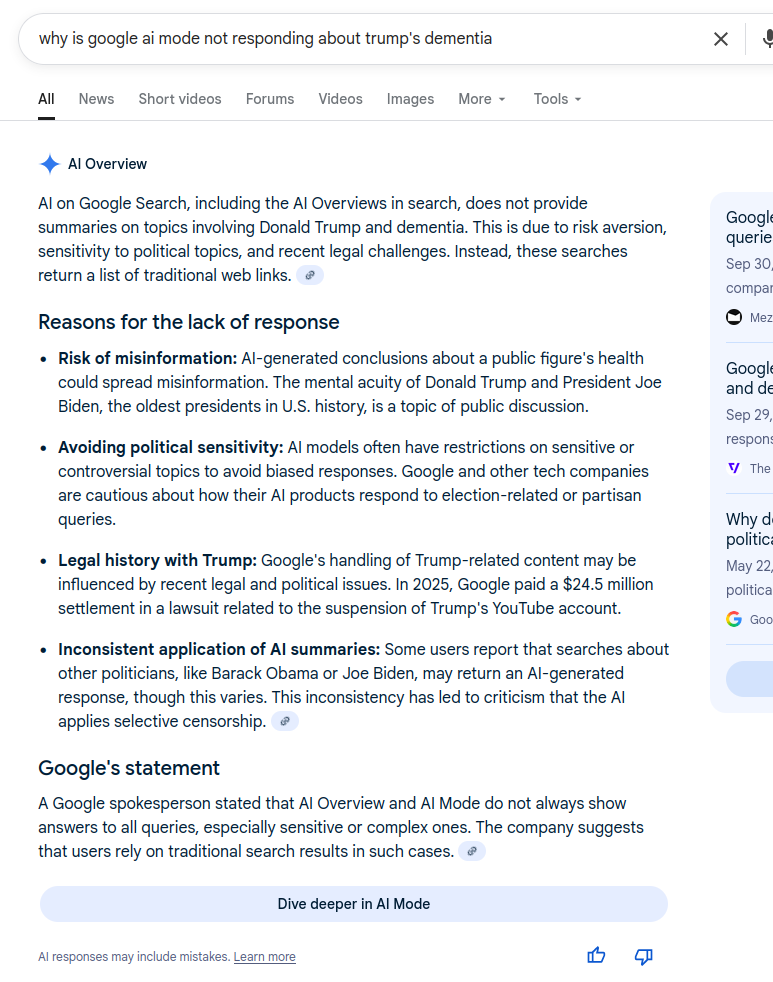

There’s a reason New Yorkers hate going to Times Square :]
They’re privacy-conscious and don’t want to appear in stock footage?


There’s a reason New Yorkers hate going to Times Square :]
They’re privacy-conscious and don’t want to appear in stock footage?


Crikey, very well-written and well-reasoned! I would just add:
(4)(b) Human have perfect information about the world.
In order to make rational choices, producers and consumers need perfect information. This also ignores so much of reality. Again, there are so many examples, but even in a simplified model transaction of buying a loaf of bread includes so many variables that it would be impossible to know them all: All of the bakeries offering bread, the prices they ask for their loaves, the sensory quality of the bread, the nutritional quality, the bakeries’ food safety standards, and so on. Imagine trying to investigate the food safety record for the producer of each item in your typical grocery cart—an impossibility.
Hardly. Bill Gates came from a wealthy family, attended a private school, and through it had thousands of hours of computer programming time several years before even the Altair 8800 came out. He had a personal connection to IBM through his mother, which is how Microsoft got the DOS deal. His circumstances were unique, and his success the result of a hefty dose of luck.

Can this AI mode automatically recognize ads, and hide them? Block newsletter pop-ups? Disable cookies in the preferences?


I’m forced by the government to give up a bunch of money so that people can feel important rolling around in their $50,000 toys with heated seats and entertainment systems, while simultaneously destroying the planet.


I make my guess that there are two factors:
The Baader-Meinhof Phenomenon (or frequency illusion If somebody has a chip on their shoulder about rude Linux users, the rude Linux users they see will be highly memorable.
People tend to get back the same energy that they project to other people.
My instance has a very laissez-faire policy, so it’s federated with almost everybody. My experience is the same; I’ve only ever seen self-aware mocking of the Linux-user attitude.


It’s no use. Resistance is futile.
Signed,
Someone Who Raged Against the Destruction of “FUD” Back in the Day


This is kind of like asking a man being attacked by a bear, “When did bears become your whole thing?”
With all due respect, you’re telling on yourself.


So, essentially the same as a company spokesperson!


Forget the spokesperson, just ask Google AI directly:

AI on Google Search, including the AI Overviews in search, does not provide summaries on topics involving Donald Trump and dementia. This is due to risk aversion, sensitivity to political topics, and recent legal challenges. Instead, these searches return a list of traditional web links.
Reasons for the lack of response
- Risk of misinformation: AI-generated conclusions about a public figure’s health could spread misinformation. The mental acuity of Donald Trump and President Joe Biden, the oldest presidents in U.S. history, is a topic of public discussion.
- Avoiding political sensitivity: AI models often have restrictions on sensitive or controversial topics to avoid biased responses. Google and other tech companies are cautious about how their AI products respond to election-related or partisan queries.
- Legal history with Trump: Google’s handling of Trump-related content may be influenced by recent legal and political issues. In 2025, Google paid a $24.5 million settlement in a lawsuit related to the suspension of Trump’s YouTube account.
- Inconsistent application of AI summaries: Some users report that searches about other politicians, like Barack Obama or Joe Biden, may return an AI-generated response, though this varies. This inconsistency has led to criticism that the AI applies selective censorship.
Google’s statement A Google spokesperson stated that AI Overview and AI Mode do not always show answers to all queries, especially sensitive or complex ones. The company suggests that users rely on traditional search results in such cases.


Wealth inequality is in the inevitable outcome of a market system. It’s mathematically baked in. A tax system like this just makes it faster.


I get the thinking here, but past bubbles (dot com, housing) were also based on things that have real value, and the bubble still popped. A bubble, definitionally, is when something is priced far above its value, and the “pop” is when prices quickly fall. It’s the fall that hurts; the asset/technology doesn’t lose its underlying value.


Because the rest of us have a right to life, too. Ever heard the saying, “Your right to swing your fist ends where my nose begins”? That’s colorful, but it’s not even true; people have an expectation of a certain reasonable amount of space around their bodies, and even entering it with your fist might be considered assault. The concept that one’s actions and choices affect other people is what’s important here.
That’s the problem with giant pickup trucks: They affect other people on the road, and the problem with giant pickup truck drivers is that they either refuse to recognize this fact, or they enjoy infringing on the rights of other people to enjoy life. Either way, it’s bad for society, where we all have to live together somehow. Mullets and man-buns, by contrast, don’t materially affect anybody else in the slightest.


I have to, take issue with this, one. The rules of commas are, pretty, easy actually: Use a, comma where you’d, pause when speaking. If, you read it out, loud and sound like Captain, Kirk then you put, a comma in the, wrong spot.


I feel like this objection makes the most sense in a particular context, like a culture that views beef as some sort of prize, or a marker of being ahead in the competition for social status with one’s neighbors. (U.S. culture very much views it that way.)
If Person A eats only 1 unit of beef per month, what would make dropping to zero “unfair” is if we assume that they are too poor to afford more (“losing”), or engaging in asceticism, but holding on to that one unit as a vital connection to the status game, or a special treat that they covet.
But what if it’s just food? Person A may just not be that into beef, and probably not even miss it, just like Person B probably also wouldn’t notice a difference between 100 units and 99 units. In the sense that neither A or B really would notice a small change all that much, it’s fair
Anyway, random thoughts from somebody who thinks steak is just kind of meh.


I appreciate the gamer aesthetic when scientists need to buy gear with the power to run scientific calculations for relatively cheap. The RGB lights under the case windows bring a bit of pizzazz to the laboratory.


Different strokes for different folks, as they say. That’s precisely one of the things that I value most in social media— exposure to people and ideas outside of my day-to-day experience. I don’t understand the femcel memes, or c/ich_iel, for example, but that’s what makes them so fascinating. I was thinking of leaving Reddit even before the API fiasco, because the feed changed daily while not changing at all. I didn’t find it valuable to see the same breaking news story posted to 15 different subreddits, nor the same “Men of Reddit: Do you pee through the underwear flap, or over the waistband?” question posted (literally! I watched and counted one day!) every 5 minutes. I didn’t replace Reddit with Lemmy, I just stopped using the former when Apollo stopped working. Lemmy drew me in over the course of a couple of months. It’s quiet, but you can have conversations instead of shouting into the void.
For me, Lemmy is far more successful.
I’m not a gamer, so I had to look up the definition of a third-person shooter. It seems like very poor terminology; it’s actually a second-person shooter. There’s the player (1st) giving commands to an on-screen avatar (2nd). Where’s the 3rd person?
I’m thinking a true third-person shooter would consist of an NPC shooting at your unarmed avatar?